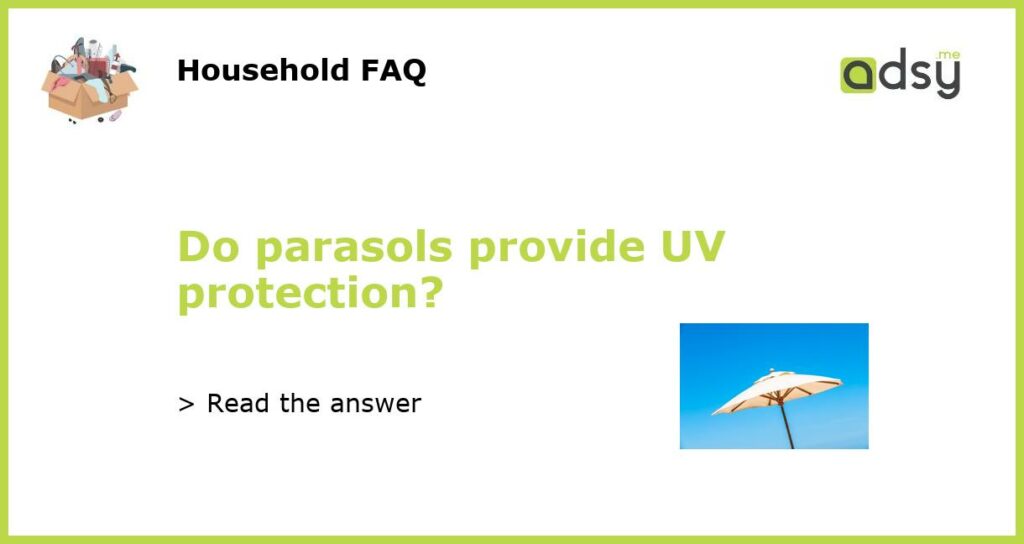Do Parasols Provide UV Protection?
Parasols are often seen as a stylish and practical accessory for outdoor activities. They provide shade and shield us from the sun’s harsh rays, but do they actually provide UV protection? The answer is yes, but it does depend on a few factors.
Understanding UV Radiation
Before we dive into whether parasols provide UV protection, it’s important to understand UV radiation and its effects on our skin. UV radiation is a form of electromagnetic radiation that comes from the sun. It is divided into three types: UVA, UVB, and UVC. UVA and UVB are the ones that can reach the Earth’s surface and affect our skin.
UVA radiation can penetrate deeply into the skin and is responsible for premature aging, wrinkles, and some skin cancers. UVB radiation, on the other hand, affects the outer layers of the skin and is the primary cause of sunburn and skin cancer.
Parasols and UV Protection
Parasols, also known as sun umbrellas, are designed to provide shade and protection from the sun. When used correctly, they can indeed offer some degree of UV protection.
However, not all parasols are created equal when it comes to UV protection. Some parasols are made with materials that have a built-in UV-blocking coating, while others may have a dense, tightly woven fabric that naturally blocks out a certain percentage of UV rays.
To ensure maximum UV protection, look for parasols that explicitly state their UV protection factor (UPF). The UPF rating measures the amount of UV radiation that can penetrate the fabric. A higher UPF rating indicates better protection. For example, a parasol with a UPF rating of 50+ blocks out over 98% of UV rays.
Factors Affecting UV Protection
While using a parasol can provide UV protection, there are a few factors that can affect its effectiveness:
Angle and Positioning
The angle and positioning of the parasol are essential in determining the amount of shade and UV protection it provides. For optimal protection, make sure the parasol is positioned to block the sun’s rays directly. Adjusting the angle throughout the day as the sun moves can also help maintain continuous shade and protection.
Size and Coverage
The size and coverage area of the parasol also play a role in its UV protection capabilities. A larger parasol can provide shade and protection to a wider area, ensuring that more people are protected from UV radiation. Consider the dimensions and coverage area when selecting a parasol to ensure adequate protection for yourself and others.
Condition of the Parasol
The condition of the parasol can affect its ability to provide UV protection. Over time, the fabric may become worn, faded, or damaged, reducing its effectiveness. Regularly inspect and maintain your parasol to ensure it continues to provide the necessary UV protection.
Use of Additional Sun Protection
While a parasol can provide UV protection, it’s important to remember that it’s not the only measure you should take to protect yourself from the sun. Wearing sunscreen with a high SPF, sunglasses, and protective clothing can complement the use of a parasol and provide you with comprehensive sun protection.
The Bottom Line
Parasols can indeed provide UV protection, but their effectiveness depends on factors such as the materials used, the UPF rating, and how they are positioned and maintained. To ensure maximum protection, choose a parasol with a high UPF rating and use it in conjunction with other sun protection measures such as sunscreen and protective clothing. Always prioritize your sun safety to reduce the risk of sunburn and skin damage.






